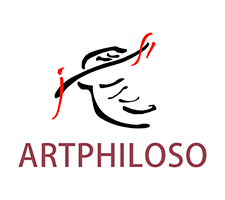From Isolation in Aix to Record-Breaking Auctions
In 2025, long lines formed outside the Hong Kong Museum of Art to see Cézanne’s iconic still life, Apples and Biscuits. Back in 2013, another of his paintings, Apples, sold for $41.6 million at Sotheby’s New York—pricing each apple at over $7 million. Even more astonishing: The Card Players was acquired by Qatar’s royal family for a record-breaking $250 million. But what gives these deceptively simple works such astronomical value? Who was Paul Cézanne, the man Picasso called “the father of us all”?
Born in 1839 in Aix-en-Provence, Cézanne was the son of a wealthy banker. He abandoned a “respectable” legal career to pursue art—earning ridicule from both family and his conservative hometown. In Paris, critics dismissed his early works as “barbaric daubs.” For over two decades, Cézanne remained an outsider, unrecognized by the official Salon. At age 40, he retreated to his family estate, Jas de Bouffan, where he obsessively painted apples under the orchard’s dappled light. Rejection became his crucible. He was, in his own words, “a mountain climber pushing a boulder uphill.”
Aix Pays Tribute
Cézanne’s hometown launched Cézanne 2025, a €12M initiative to restore his estate and studios. Visitors can now walk through the very rooms where he painted murals, and see his untouched palette in his Atelier des Lauves.
Pilgrimage to Bibémus
Collectors and curators alike are heading to Bibémus Quarry, where Cézanne studied the fractured geometry of rocks—an aesthetic that laid the foundation for Cubism.
Asia’s Cézanne Moment
In Hong Kong, the Musée de l’Orangerie debuted its Asian tour with Cézanne & Renoir, drawing over 130,000 visitors. The Red Roofs on display revealed the quiet radicalism behind Cézanne’s brushwork.
Though vastly different in style, Cézanne and Renoir were lifelong friends. In the 1860s, they painted side by side in the forests of Fontainebleau—one chasing geometry, the other chasing light. Renoir once admitted:
“Without Cézanne’s obsession with structure, Impressionism would be nothing more than beautiful froth.”
From Renoir, Cézanne learned to observe the shimmer of skin; from Cézanne, Renoir saw the solidity of form. Their contrasting visions eventually converged in Picasso’s Les Demoiselles d’Avignon—currently on view in Hong Kong—a landmark of modernism.
Cézanne’s legacy proves that true innovation often begins in obscurity. He sold only a few paintings in his lifetime. Yet today, his works represent not only financial assets but the origin of modern art. His still lifes redefined painting—not as reproduction, but as reconstruction. His obsession with “essential form” inspired Cubism, abstraction, and generations of postwar painters.
Amid this global revival, Cézanne’s cultural capital is soaring. For collectors, acquiring a Cézanne is acquiring the DNA of all 20th-century art. As one Hong Kong exhibition guide says, pointing to the empty space where Cézanne’s easel once stood:
“He stared at Mont Sainte-Victoire for 38 years—until he painted the mountain into an apple.”
And that apple? Now priceless.
